Increased Market Volatility, Why Bitcoin Still Has a Chance to Reach $200,000 in Q4?
Institutional Money Fearless of Volatility Continues to Buy, Target Price $200,000.
Original Title: "2025 Q4 Bitcoin Valuation Report"
Original Author: Tiger Research
Key Points
· Institutional Investors Continuously Accumulating Amidst Volatility — Net inflows into ETFs remained stable in Q3, with MSTR acquiring 388 BTC in a single month, showcasing a strong belief in long-term investment;
· Overheated but Not Yet Extreme — The MVRV-Z ratio stands at 2.31, indicating elevated valuation but not at an extreme level yet. The clearing of leveraged funds has removed short-term traders, creating room for the next upward trend;
· Global Liquidity Environment Continues to Improve — Broad money supply (M2) has surpassed $96 trillion, reaching a historical high. Expectations of a Fed rate cut have been rising, with further cuts of 1-2 times expected later this year.
Institutional Investors Buying into US-China Trade Uncertainty
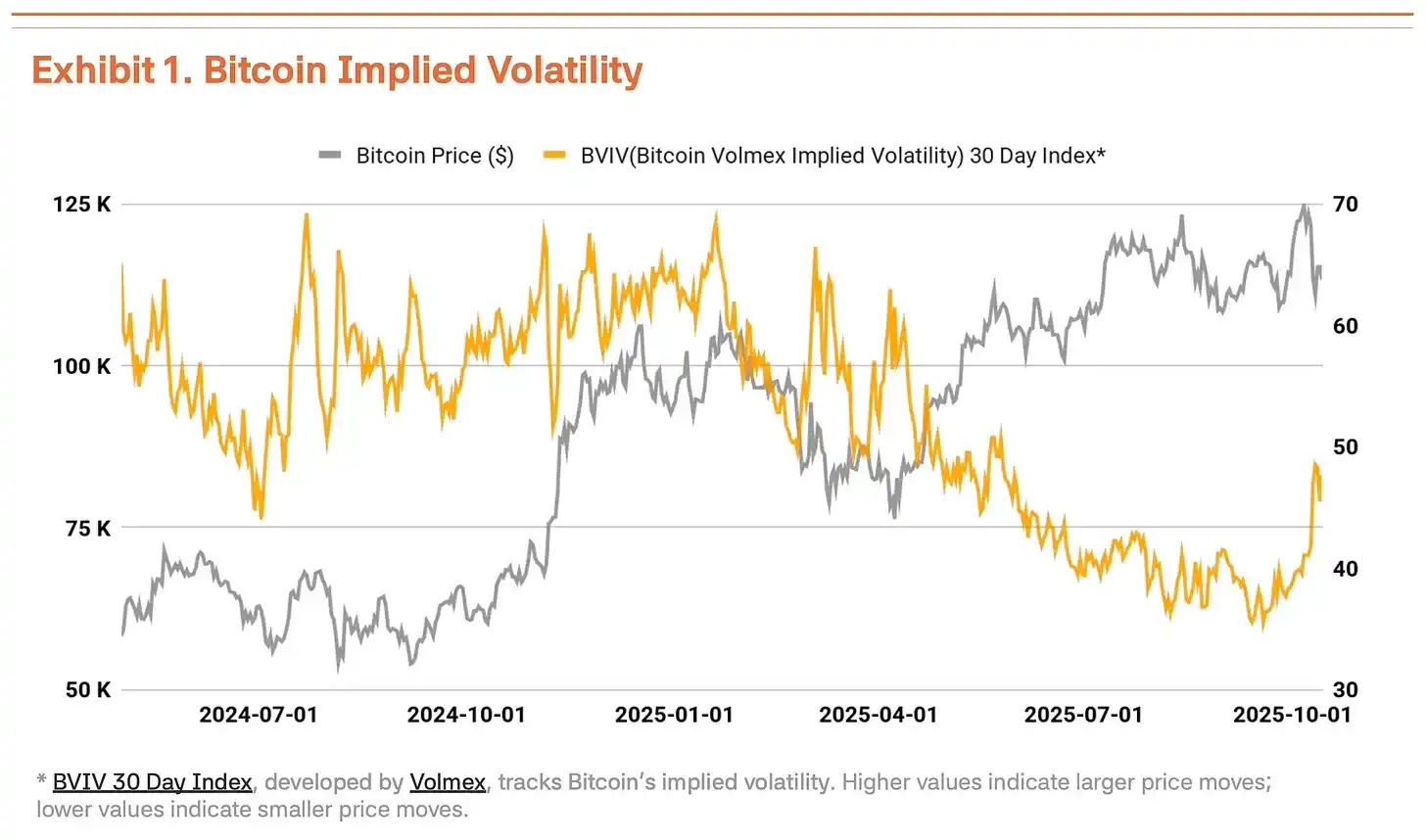
In Q3 2025, the Bitcoin market transitioned from a strong uptrend in Q2 (with a 28% increase QoQ) to a slower pace in Q3 (with a 1% increase QoQ).
On October 6, Bitcoin hit a new all-time high of $126,210. However, the Trump administration once again applied trade pressure on China, leading to a price correction of 18% to $104,000, significantly increasing volatility. According to Volmex Finance's Bitcoin Volatility Index (BVIV), institutional investors continued to accumulate steadily, with Bitcoin's volatility narrowing from March to September but surging by 41% after September, intensifying market uncertainty (Chart 1).
Driven by the resurgence of US-China trade friction and Trump's tough rhetoric, this correction appears to be temporary. Institutional strategic accumulation led by Strategy Inc. (MSTR) is, in fact, accelerating. The macro environment has also played a supportive role. Global broad money supply (M2) has surpassed $96 trillion, reaching a historical high, while the Fed cut interest rates by 25 basis points to 4.00%-4.25% on September 17. The Fed hinted at further rate cuts of 1-2 times this year, with a stable labor market and economic recovery creating favorable conditions for risk assets.
Institutional fund inflows remained strong. Bitcoin spot ETF net inflows in Q3 reached $7.8 billion. Although lower than the $12.4 billion in Q2, the net inflows throughout Q3 confirmed institutional investors' steady buying. This momentum continued into Q4 — with only the first week of October seeing $3.2 billion in inflows, marking a new high for weekly inflows in 2025. This indicates that institutional investors view price corrections as strategic entry opportunities. Strategy continued to buy during the market correction, acquiring 220 BTC on October 13 and 168 BTC on October 20, totaling 388 BTC within a week. This demonstrates that institutional investors firmly believe in Bitcoin's long-term value regardless of short-term fluctuations.
On-Chain Data Signals Overheating, Fundamental Unchanged

On-chain analysis has revealed some overheating signs, although the valuation is not yet concerning. The MVRV-Z ratio (Market Value to Realized Value) is currently in the overheated zone at 2.31, but it has stabilized compared to the extreme valuation range seen in July and August (Chart 2).
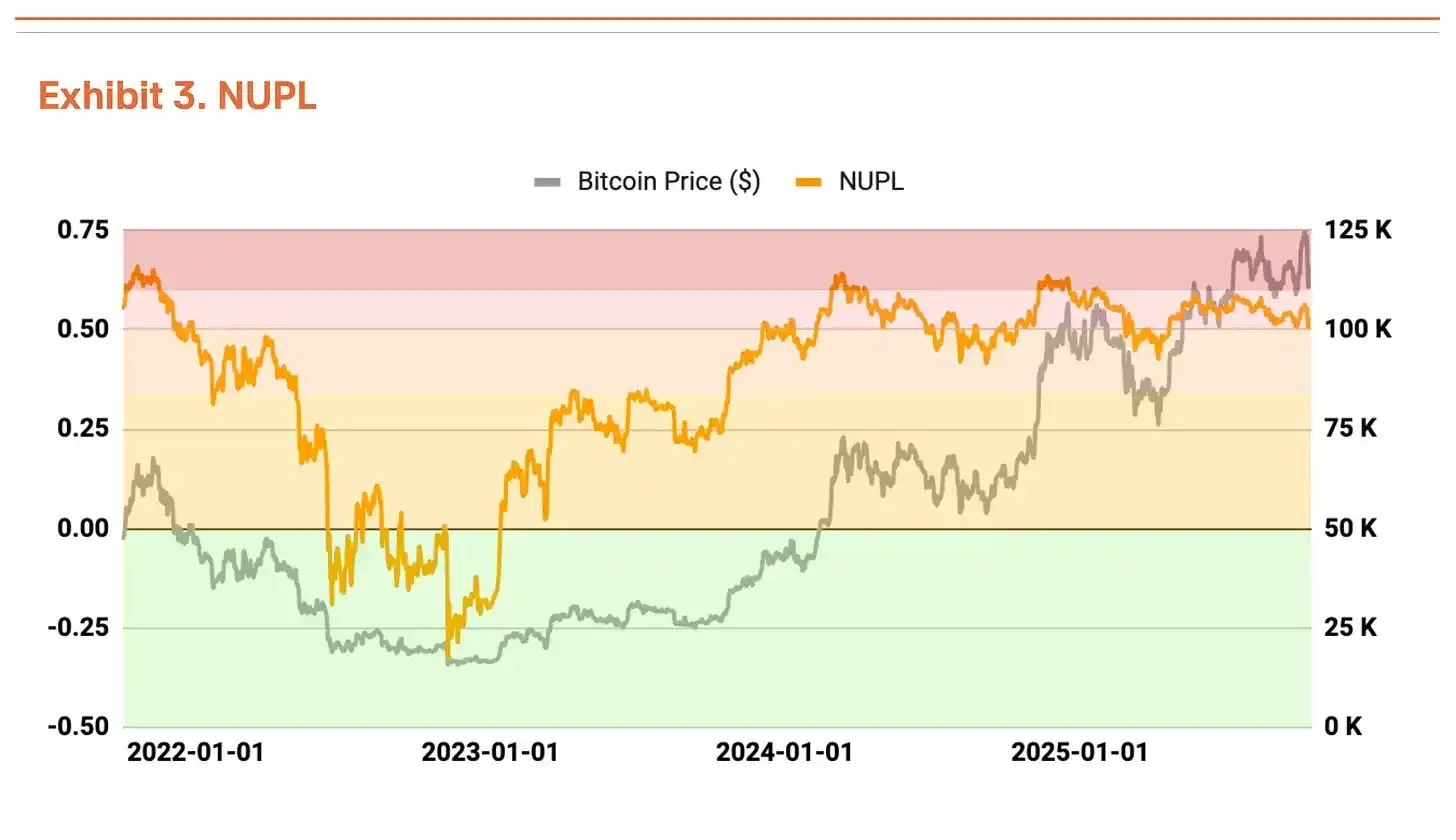
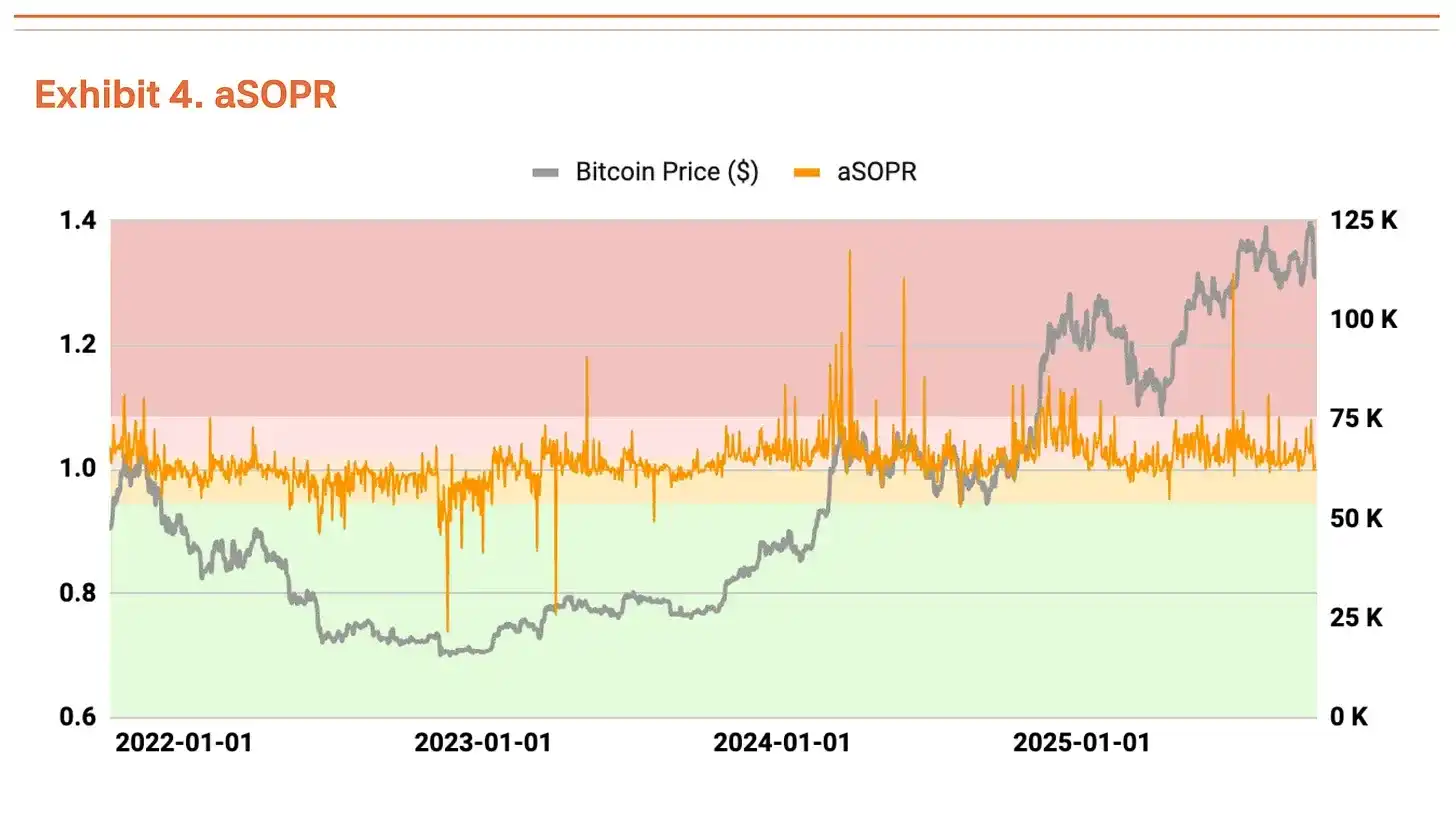
The Net Unrealized Profit/Loss Ratio (NUPL) also shows an overheated area, but it has eased compared to the high unrealized profit situation in the second quarter (Chart 3). The adjusted SOPR (aSOPR) reflects investors' realized profit/loss, with the ratio very close to the equilibrium value of 1.03, indicating no cause for concern (Chart 4).
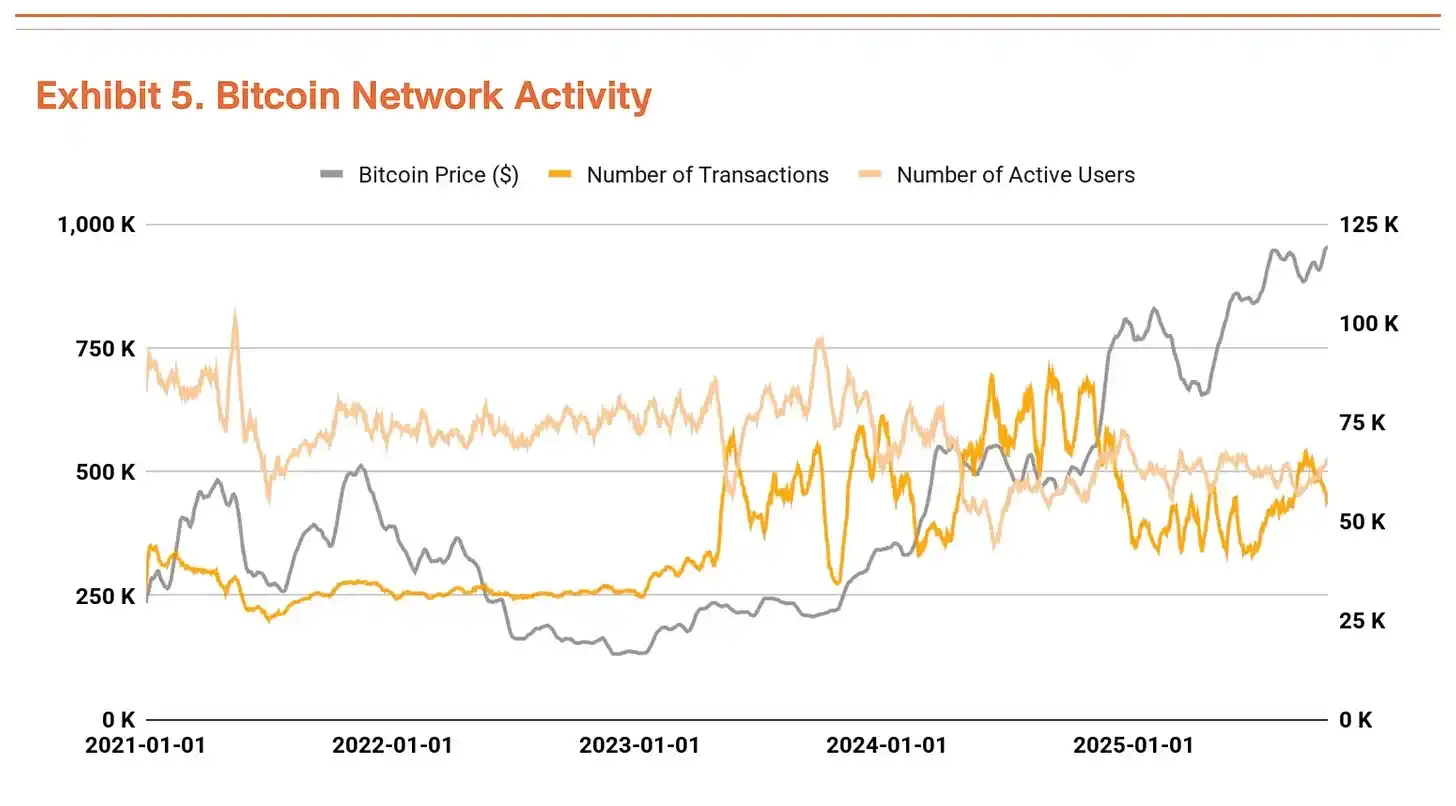
Bitcoin's transaction count and active addresses remain at similar levels to the previous quarter, indicating a temporary slowdown in network growth momentum (Chart 5). Meanwhile, total transaction volume is on the rise. A decrease in transaction count but an increase in transaction volume suggests that larger amounts of funds are being moved in fewer transactions, indicating an increase in large-scale fund flows.
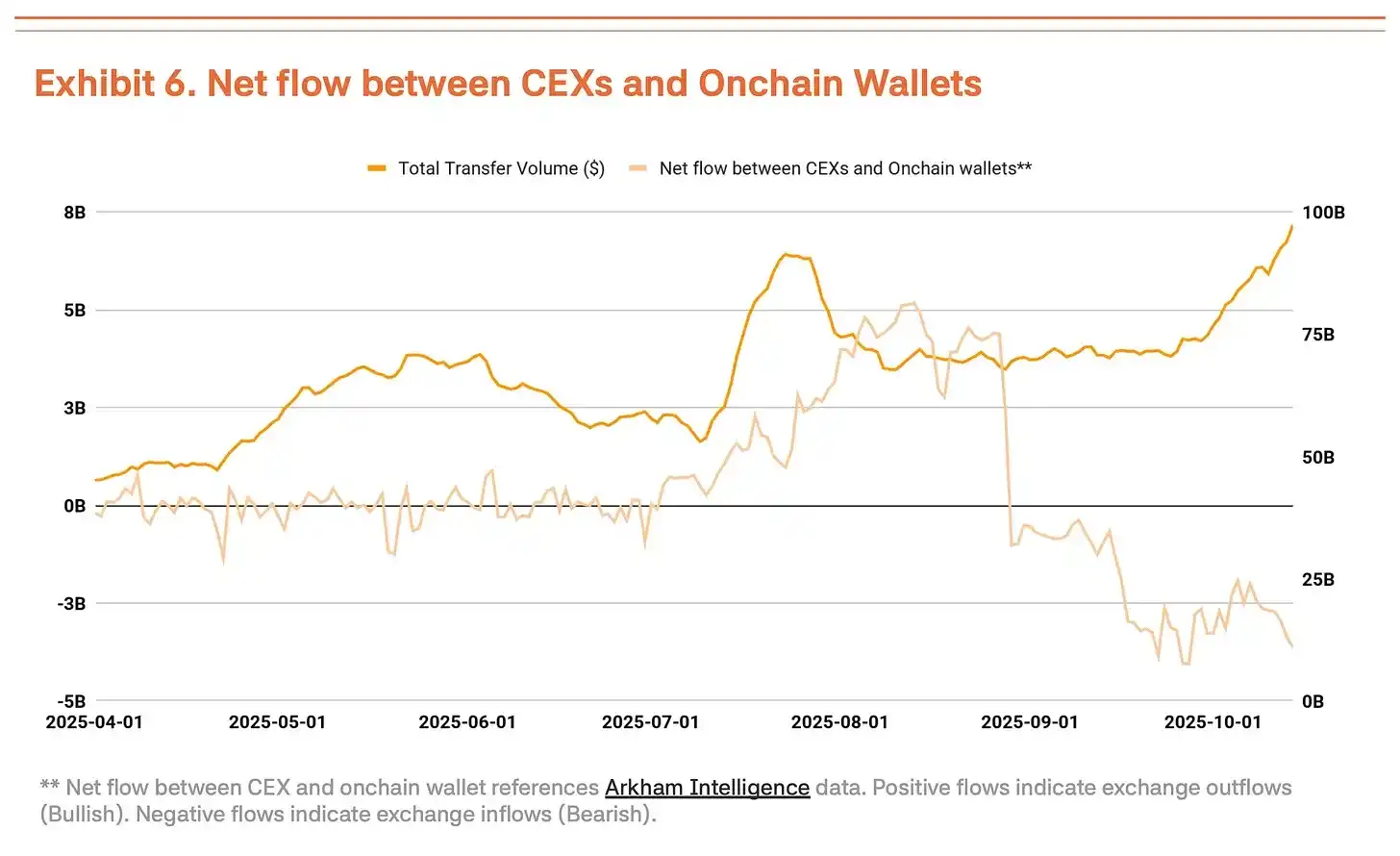
However, we cannot simply interpret the expansion of transaction volume as a positive signal. Recent inflows to centralized exchanges have increased, typically indicating holders are ready to sell (Chart 6). In a scenario where fundamental indicators like transaction count and active addresses have not improved, the increase in transaction volume more likely reflects short-term fund movement and selling pressure in a high-volatility environment, rather than an expansion of real demand.
October 11th Crash Proves Market Shift to Institution-Led
The crash on October 11th on centralized exchanges (a 14% drop) proved that the Bitcoin market has shifted from retail-led to institution-led.
The key point is that the market reaction was vastly different from before. In a similar environment at the end of 2021, market panic spread among retail-dominated markets, leading to a subsequent crash. This time, the magnitude of the pullback was limited. After large-scale liquidation, institutional investors continued to buy, indicating their firm defense of the market downside. Furthermore, institutions seem to view this as a healthy consolidation phase, helping to alleviate excessive speculative demand.
In the short term, cascading sell-offs may lower the average buy-in price for retail investors and increase psychological pressure, potentially exacerbating volatility due to dampened market sentiment. However, if institutional investors continue to enter during the consolidation period, this pullback may lay the groundwork for the next uptrend.
Price Target Raised to $200,000
Using our TVM method for third-quarter analysis, we determined a neutral benchmark price of $154,000, a 14% increase from the second quarter's $135,000. Building on this, we applied a -2% fundamental adjustment and a +35% macro adjustment, resulting in a target price of $200,000.
The -2% fundamental adjustment reflects a temporary slowdown in network activity and an increase in deposits on centralized exchanges, indicating short-term weakness. The macro adjustment remains at 35%. Global liquidity expansion and institutional inflows continue, and the Fed's dovish stance provide a strong catalyst for the fourth-quarter rally.
A short-term pullback may be driven by signs of overheating, but this is part of a healthy consolidation phase rather than a trend reversal or market perception shift. The benchmark price continues to rise, indicating a steady increase in Bitcoin's intrinsic value. Despite temporary softness, the medium to long-term upward outlook remains solid.
Disclaimer: The content of this article solely reflects the author's opinion and does not represent the platform in any capacity. This article is not intended to serve as a reference for making investment decisions.
You may also like
BTC Signs Potential Mid-Cycle Bottom As Fear Grips the Market
The "Black Tuesday" for US stock retail investors: Meme stocks and the crypto market plunge together under the double blow of earnings reports and short sellers
Overnight, the US stock market experienced its worst trading day since April, with the retail-heavy stock index plunging 3.6% and the Nasdaq dropping more than 2%. Poor earnings from Palantir and bearish bets by Michael Burry triggered a sell-off, while increased volatility in the cryptocurrency market added to retail investor pressure. Market sentiment remains tense, and further declines may follow. Summary generated by Mars AI. The accuracy and completeness of this summary are still being iteratively improved by the Mars AI model.
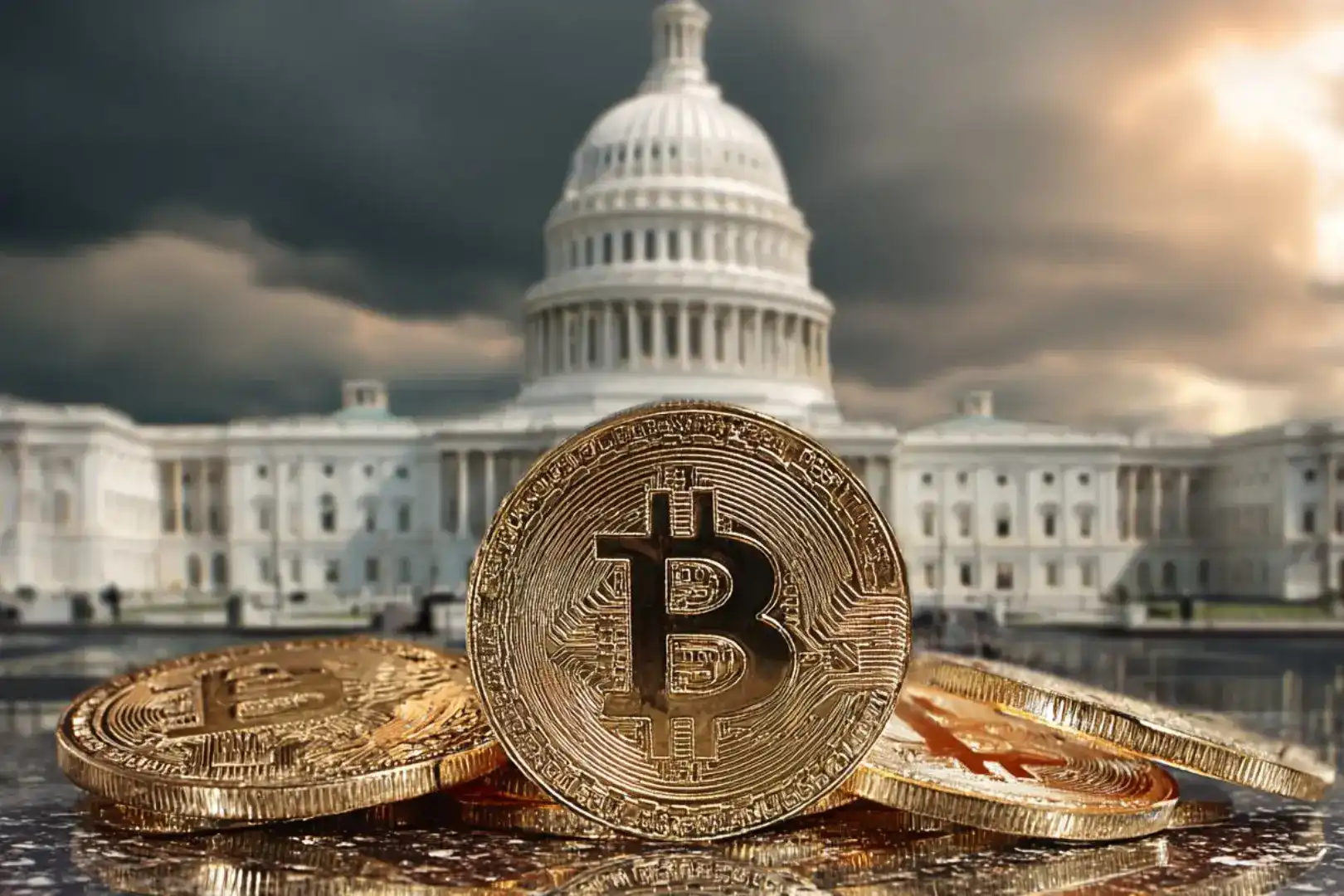
Crypto Market Macro Report: US Government Shutdown Leads to Liquidity Contraction, Crypto Market Faces Structural Turning Point
In November 2025, the crypto market experienced a structural turning point. The U.S. government shutdown led to a contraction in liquidity, pulling about 20 billions USD out of the market and intensifying capital shortages in the venture capital sector. The macro environment remains pessimistic.
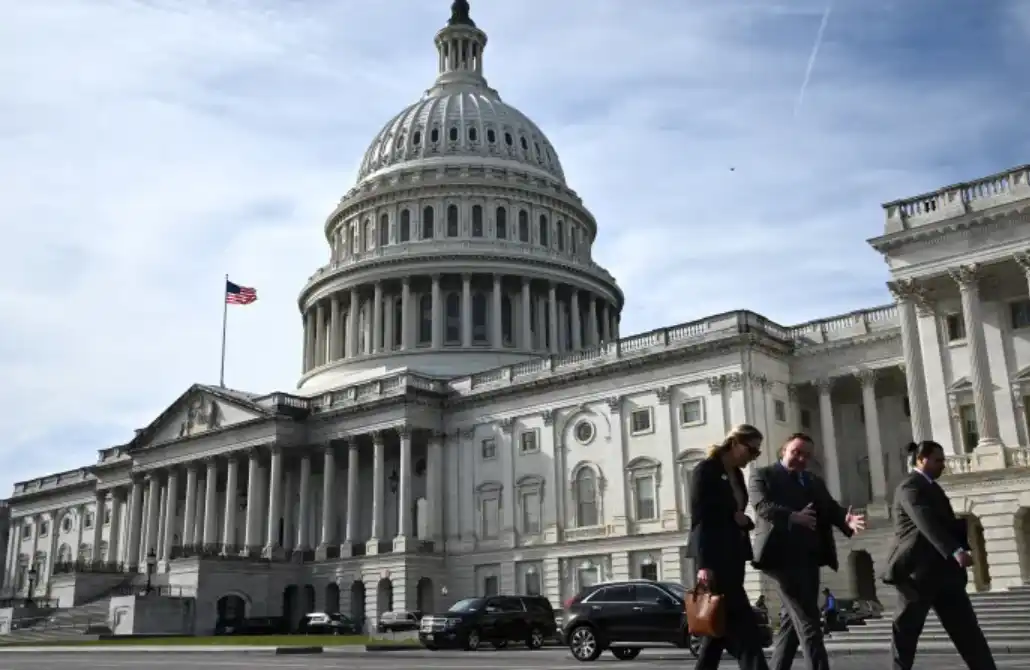
Market volatility intensifies: Why does Bitcoin still have a chance to reach $200,000 in Q4?
Institutional funds continue to buy despite volatility, targeting a price level of $200,000.

